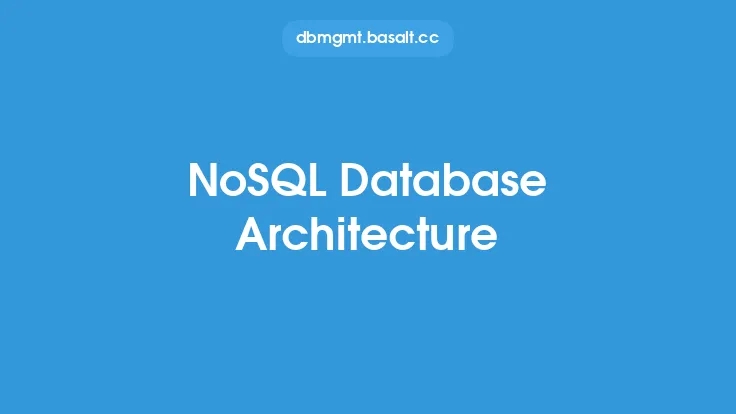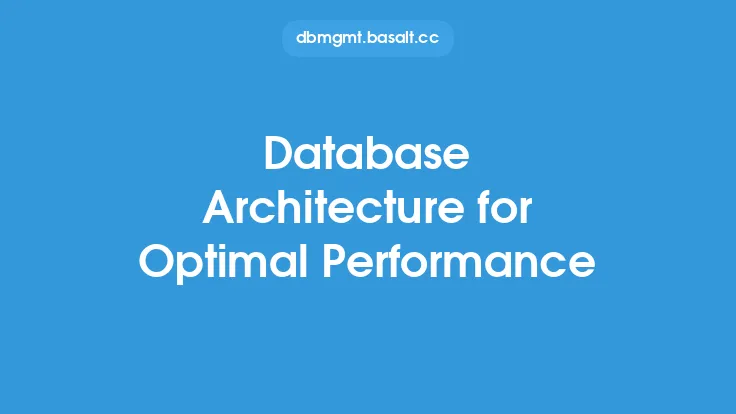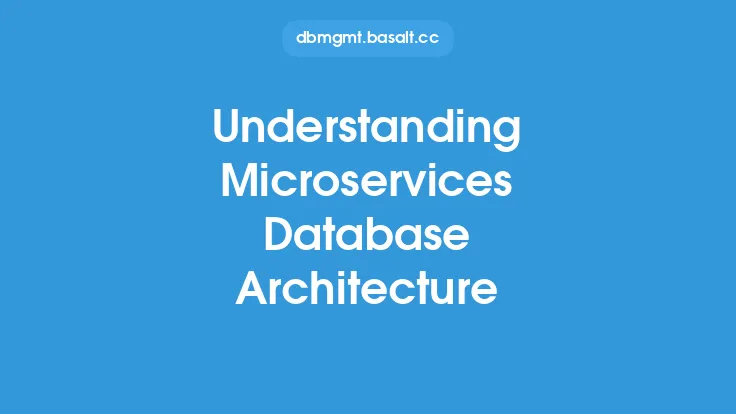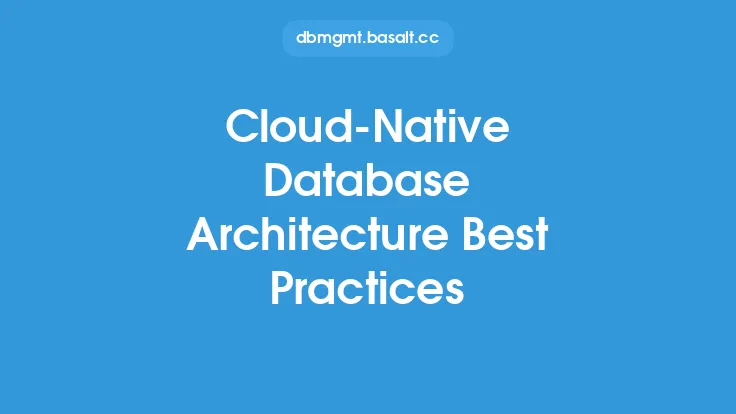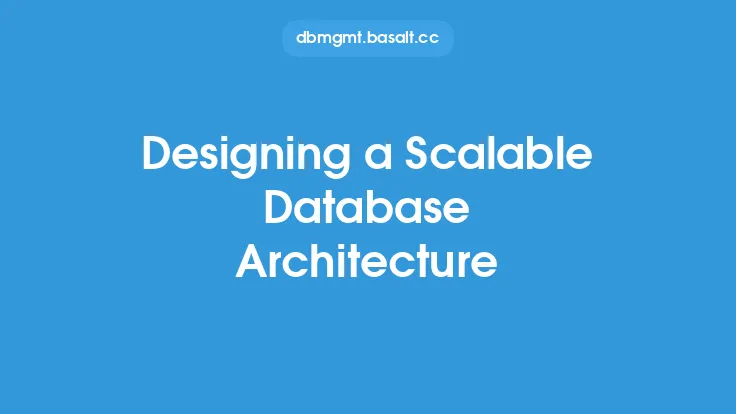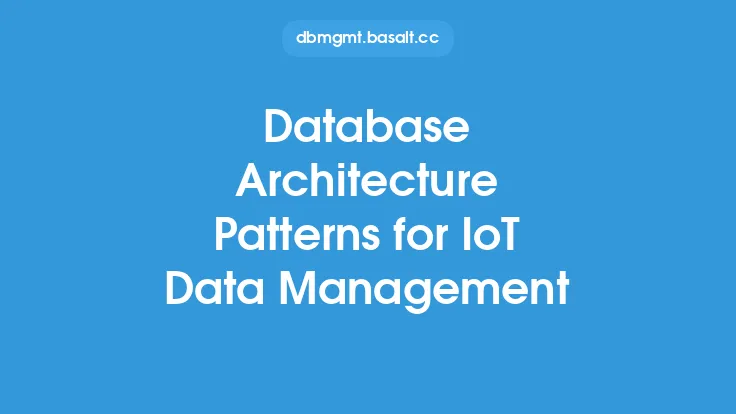Relational databases have been a cornerstone of data management for decades, and their architecture is a crucial aspect of understanding how they work. A relational database is a type of database that stores and provides access to data points that are related to each other. The relational database architecture is based on the relational model, which was first introduced by Edgar F. Codd in 1969. This model is based on the concept of relations, which are sets of tuples that represent the relationships between different data entities.
Introduction to Relational Database Components
A relational database consists of several key components, including tables, indexes, views, and relationships. Tables are the basic storage units in a relational database, and they consist of rows and columns. Each row represents a single record, and each column represents a field or attribute of that record. Indexes are data structures that improve the speed of data retrieval by providing a quick way to locate specific data. Views are virtual tables that are based on the result of a query, and they can be used to simplify complex queries or to provide a layer of abstraction between the physical and logical representations of the data. Relationships are the connections between different tables, and they are used to link related data together.
Relational Database Schema
The relational database schema is the overall structure or organization of the database, including the relationships between different tables and the constraints that are applied to the data. The schema is typically defined using a data definition language (DDL), such as SQL. The schema includes the definitions of the tables, indexes, views, and relationships, as well as any constraints that are applied to the data, such as primary keys, foreign keys, and check constraints. A well-designed schema is essential for ensuring data consistency and integrity, as well as for improving the performance and scalability of the database.
Data Normalization
Data normalization is the process of organizing the data in a relational database to minimize data redundancy and improve data integrity. Normalization involves dividing the data into two or more related tables, and defining relationships between the tables. The goal of normalization is to ensure that each piece of data is stored in one place and one place only, which helps to eliminate data inconsistencies and improve data integrity. There are several levels of normalization, including first normal form (1NF), second normal form (2NF), and third normal form (3NF). Each level of normalization applies additional rules to the data to further reduce redundancy and improve integrity.
Relational Database Storage
Relational databases store data in a series of files or storage devices, such as hard disk drives or solid-state drives. The storage architecture of a relational database typically includes a combination of storage devices, such as disk arrays or storage area networks (SANs). The data is stored in a series of blocks or pages, which are typically 4KB or 8KB in size. Each block or page contains a portion of the data, and the blocks or pages are linked together to form a larger storage structure. The storage architecture of a relational database is designed to provide high performance, reliability, and scalability, as well as to support the recovery of data in the event of a failure.
Relational Database Query Processing
Relational databases use a query processor to execute queries and retrieve data. The query processor is responsible for parsing the query, optimizing the query plan, and executing the query. The query processor uses a combination of algorithms and data structures, such as indexing and caching, to improve the performance of the query. The query processor also uses a cost-based optimizer to determine the most efficient query plan, which takes into account factors such as the size of the tables, the number of rows, and the availability of indexes.
Relational Database Transaction Management
Relational databases use transaction management to ensure the consistency and integrity of the data. A transaction is a series of operations that are executed as a single, all-or-nothing unit of work. The transaction manager is responsible for managing the transactions, including starting, committing, and rolling back transactions. The transaction manager uses a combination of locking and logging mechanisms to ensure that the transactions are executed consistently and reliably. The transaction manager also uses a recovery mechanism to restore the database to a consistent state in the event of a failure.
Relational Database Security
Relational databases use a combination of security mechanisms to protect the data from unauthorized access. The security mechanisms include authentication, authorization, and encryption. Authentication is the process of verifying the identity of users, and authorization is the process of granting or denying access to the data based on the user's identity. Encryption is the process of converting the data into a secure, unreadable format to prevent unauthorized access. The security mechanisms are typically implemented using a combination of database features, such as roles, privileges, and access control lists (ACLs).
Relational Database Administration
Relational database administration involves a range of tasks, including database design, implementation, and maintenance. The database administrator is responsible for designing the database schema, implementing the database, and performing routine maintenance tasks, such as backups and performance tuning. The database administrator also uses a range of tools and techniques, such as database monitoring and troubleshooting, to ensure the reliability and performance of the database. The database administrator must have a strong understanding of the relational database architecture, as well as the skills and knowledge to design, implement, and maintain a relational database.
Conclusion
In conclusion, the relational database architecture is a complex and sophisticated system that is designed to store and manage large amounts of data. The architecture is based on the relational model, which provides a powerful and flexible way to represent and manipulate data. The relational database architecture includes a range of components, such as tables, indexes, views, and relationships, which work together to provide a robust and scalable data management system. The architecture also includes a range of features, such as data normalization, query processing, transaction management, and security, which are designed to ensure the consistency, integrity, and reliability of the data. By understanding the relational database architecture, database administrators and developers can design, implement, and maintain relational databases that meet the needs of their organizations.
